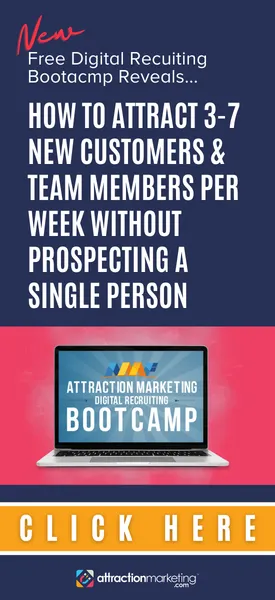Stuck on how to find micro-influencers for your brand? You’ve come to the right place for answers!
We get it: spotting potential micro-influencers in the wild is tricky because creators with ~10,000 to ~100,000 followers are less in-your-face than celebrities and career influencers.
And so their profiles don’t scream “Hey, I’m an influencer!” at a glance.
That’s exactly what makes micro-influencers so valuable for brands, though.
Smaller creator accounts are in high demand due to their authenticity and high engagement rates.
Having run thousands of micro-influencer campaigns, we know exactly where those smaller creators hang out. Below we explain how to find micro-influencers for your brand without wasting time!
4 Ways to Find Micro-Influencers for Your Brand
There’s no shortage of content creators out there for brands these days.
However, finding relevant micro-influencers is significantly different than finding macro-influencers and larger creators. Here’s why:
- They are less “in-your-face” about being influencers. These creators often blend in with regular users, sharing genuine product recommendations on TikTok’s FYP or IG feeds. Consumers and shoppers tend to perceive their content as advice rather than another ad.
- Not all influencer discovery platforms or databases feature them. Many platforms set follower count thresholds. Some focus primarily on macro-influencers with millions of followers. That means smaller creators are invisible to these tools.
- Their smaller follower counts make them easier to overlook. Many brands still focus on creators with six-digit follower counts. That said, our own experience and research confirm that engagement rates and authenticity take priority over follower count.
Food for thought: 64% of brands collaborated with micro-influencers last year. That makes them the most popular type of creators to work with by far.
Translation? Micros deliver massive results despite being “smaller” at a glance.
So, how can you find your brand’s best micro-influencers on Instagram and TikTok?
Here are four methods of finding micro-influencers depending on your bandwidth.
1. Look at Your Current Customers and UGC First
Who better than your satisfied customers to serve as your best influencers?
Creators who have already used your products and continue to do so seem to be perfect candidates to tell others about your brand and discuss the benefits your product can bring.
These creators already know and trust you because they use your product. By turning their positive experiences into content, smaller creators provide impactful recommendations to their audiences and build social proof for your brand.
For example, this creator made a video about Refy mascara simply because she wanted to share how the product made her lashes longer and fuller.
No big deal, right? Well, this “simple” video from an everyday consumer went viral on TikTok, and reached a staggering 36.4M views despite the creator having just 7,000 followers!


Source
Note how beauty buyers flooded the comments, eager to learn where to buy the project themselves. This video illustrates the winning formula for any type of influencer content:
Consumer Satisfaction + Genuine Recommendation = Authentic Engagement!
2. Find Micro-Influencers Using Search Phrases and Hashtags
A fast way to run a targeted search and find micro-influencers who align with your target audience is by using relevant hashtags and social media keywords.
Both IG and TikTok creators frequently apply hashtags such as #ad, #gifted, #PR, #unboxing and others to disclose new partnerships and boost engagement.
Through hashtags and search phrases, you can niche down your search and find specific types of creators based on your industry and target audience. This includes previous customers posting to your hashtag or using your competitors’ products.
Below is a snapshot of how to find micro-influencers on TikTok and Instagram with this approach:


These sorts of profiles start as a solid starting point and will uncover creators faster than generic hashtag searches.
Let’s say you’re trying to find relevant micro-influencers with a specific skin condition or hair type. This will likely require going down the rabbit hole of social media keywords and phrases that your target audience is searching for.
A combination of niche keywords and hashtags can be a life-saver for anyone struggling with how to find micro-influencers. For example, consider how these combos can uncover creators who often post about products:
- “dry skin” + #unboxing
- “flaky scalp” + #review
- “best foundation” + “#gifted
Pick the most common types of phrases you see in Google searches that are ideal for targeting in your social content. For example, you could use #gifted along with #beautyartist to refine your search.
3. Attract Micro-Influencers By Inviting Them to Your PR List
Wouldn’t it be nice for creators to approach you instead of having to scramble for them yourself?
All collaborations between creators and brands involve two sides and you shouldn’t always be the hunter! You can turn the tables and encourage creators to make the first move with an opt-in list.
Many brands use content creator programs to speed up the process of building their list of micro-influencers. After all, influencers who initiate contact are more eager to commit to collaborations with brands by default.
You don’t have to look hard to find brands sending PR packages to influencers. Likewise, there are plenty of relevant micro-influencers out there eager to get your product in their hands. Brands such as MakeUp Eraser collaborate with influencers of all sizes, even those with small follower counts.

Note how the brand offers various perks for its creators. This includes gifts in exchange for sharing content on social media about their positive experiences.
This is a great example of how to find micro-influencers without putting the burden on your team.
However, keep in mind that there are a few drawbacks to this approach.
Although you’re free of having to source as many influencers, you still need to audit their profiles. Not to mention handling shipping and the process of physically getting products into their hands.
This process alone is time-consuming, especially if you plan on collaborating with more than a handful of creators. The bigger your list of micro-influencers gets, the more work required DIY.
4. Use a Dedicated Micro-Influencer Search Tool
When in doubt, influencer search tools can be one of the time-efficient methods to find potential influencers for your brand.
Of course, they aren’t without their drawbacks!
Many influencer discovery tools overemphasize follower count or arbitrary metrics to define influencers. Your search results may be limited, meaning you could miss out on the best creators for your brand.
The impact of micro-influencer campaigns’ reach and engagement rate has been proven time and time again. The days of macro-only campaigns are over.
New trends demand new solutions. For example, specialized micro-influencer platforms (like Statusphere!) make sense for brands that want to collaborate with smaller creators at scale and match with influencers ASAP.

Contrast this with databases or search engines that put the burden of outreach, vetting and negotiating on brands. That’s why brands are investing in smarter influencer platforms to do the heavy lifting.
How to Find Micro-Influencers for Collabs at Scale
Finding small creators can be challenging but it’s definitely achievable.
Either way, brands that want to run more than a few collabs quickly realize that the DIY way won’t yield the results or right types of creators. Not in a timely manner, anyway!
Because the process of finding and onboarding micro-influencers involves so many moving pieces:
- Communicating with and negotiating with creators
- Influencer relations and management
- Tracking results
- Fulfillment and shipping products
This is where Statusphere’s micro-influencer marketing platform comes in.
While you focus on the big picture of your influencer marketing campaigns, Statusphere’s software handles getting your brand high volumes of influencer content with guaranteed delivery to creators.
Instead of manually finding micro-influencers, our platform automatically connects you with vetted creators to generate UGC at scale. We go into great detail by matching your brand with creators using over 250 first-party data points.
Want to learn more about how our platform works? Reach out to one of our consumer-to-consumer marketing experts to discover how we can match you with the right creators and scale your influencer marketing efforts in a fraction of the time.













Leave a Reply